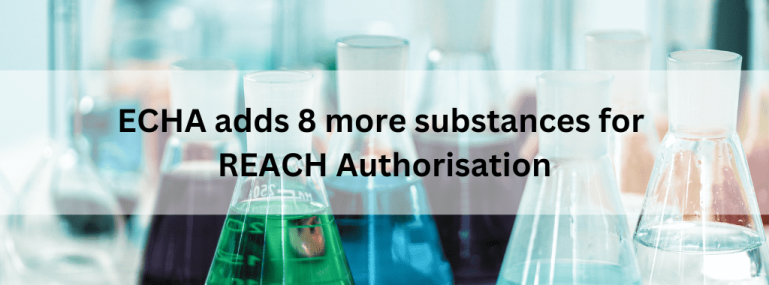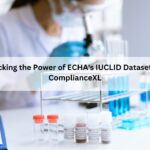To ensure proper control of risks for human health and the environment ECHA recommends that the European Commission adds eight substances to the REACH Authorisation List including Lead.
Use of Lead in batteries, ammunition, cables, vehicles, machinery, electronics, radiation shielding, sanitary, construction, art and musical instruments comes under the scope of authorisation. As a reprotoxic substance, volume range set for lead in the scope of authorisation is >1000.
The other seven recommended substances include:
- Ethylenediamine (CAS# 107-15-3)
- 2-(4-tertbutylbenzyl) propionaldehyde and its individual stereoisomers
- Glutaral (CAS# 111-30-8)
- 2-methyl-1-(4-methylthiophenyl)-2-morpholinopropan-1-one (CAS# 71868-10-5)
- 2-benzyl-2- dimethylamino-4’-morpholinobutyrophenone (CAS# 119313-12-1)
- Diisohexyl phthalate (CAS# 71850-09-4) and
- Orthoboric acid of sodium salt group.
Ethylenediamine and Glutaral cause respiratory ailments. Rest of recommended substances such as 2-(4-tertbutylbenzyl) propionaldehyde and its individual stereoisomers, 2-methyl-1-(4-methylthiophenyl)-2-morpholinopropan-1-one, 2-benzyl-2- dimethylamino-4’-morpholinobutyrophenone, Diisohexyl phthalate, Orthoboric acid, sodium salt are identified as toxic to reproduction.
Most of these substances are part of other directives too. 2-methyl-1-(4-methylthiophenyl)-2-morpholinopropan-1-one and Diisohexyl phthalates are also part of the medical device directive, CMD (Conflict Minerals Declaration), CAD, ELV, WFD Directive. Glutaral is listed in cosmetic directive of EU (European Union) union.
Once substances are added to the authorization list, companies will need to apply for authorisation for their specific uses. Also, companies should look for viable alternatives.
The Candidate List of substances of very high concern has been prioritized by ECHA as the highest priority substances, following the 2014 agreement. Lead was included in the draft recommendation published on 2 February 2022, which generated a great deal of feedback during the consultation process. As a result, ECHA’s Member State Committee discussed the timing, the relationship with other ongoing or planned regulatory activities, and the expected workload for industry and authorities. To ensure worker and environmental protection, ECHA recommends the European Commission add eight substances to the REACH Authorization List, including lead. Adding substances to the list will require companies to apply for authorization to continue using them.
With our clients, we make sure they are always compliant with global regulations and are always operating responsibly and sustainably. With our comprehensive solutions, organizations can assess their current compliance status and stay up to date on ECHA requirements. Additionally, we provide reporting services to ensure that all necessary documentation is completed accurately and on time.
For information on the 11th recommendation of REACH Authorization, contact one of our compliance experts today.






